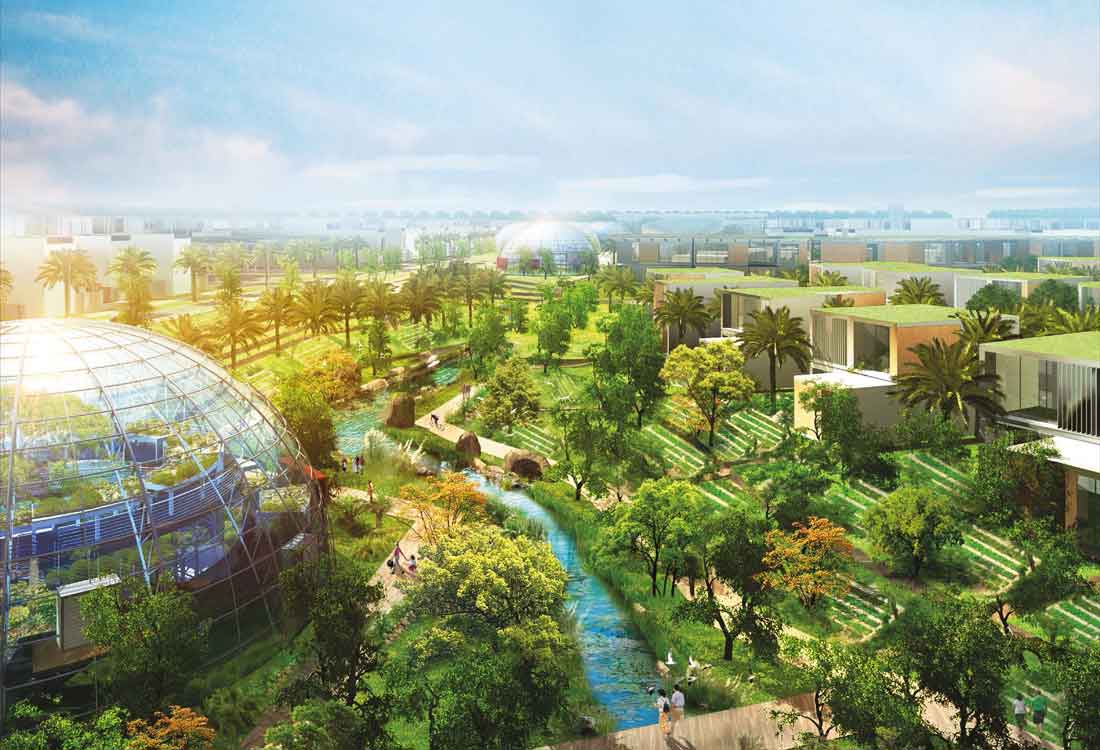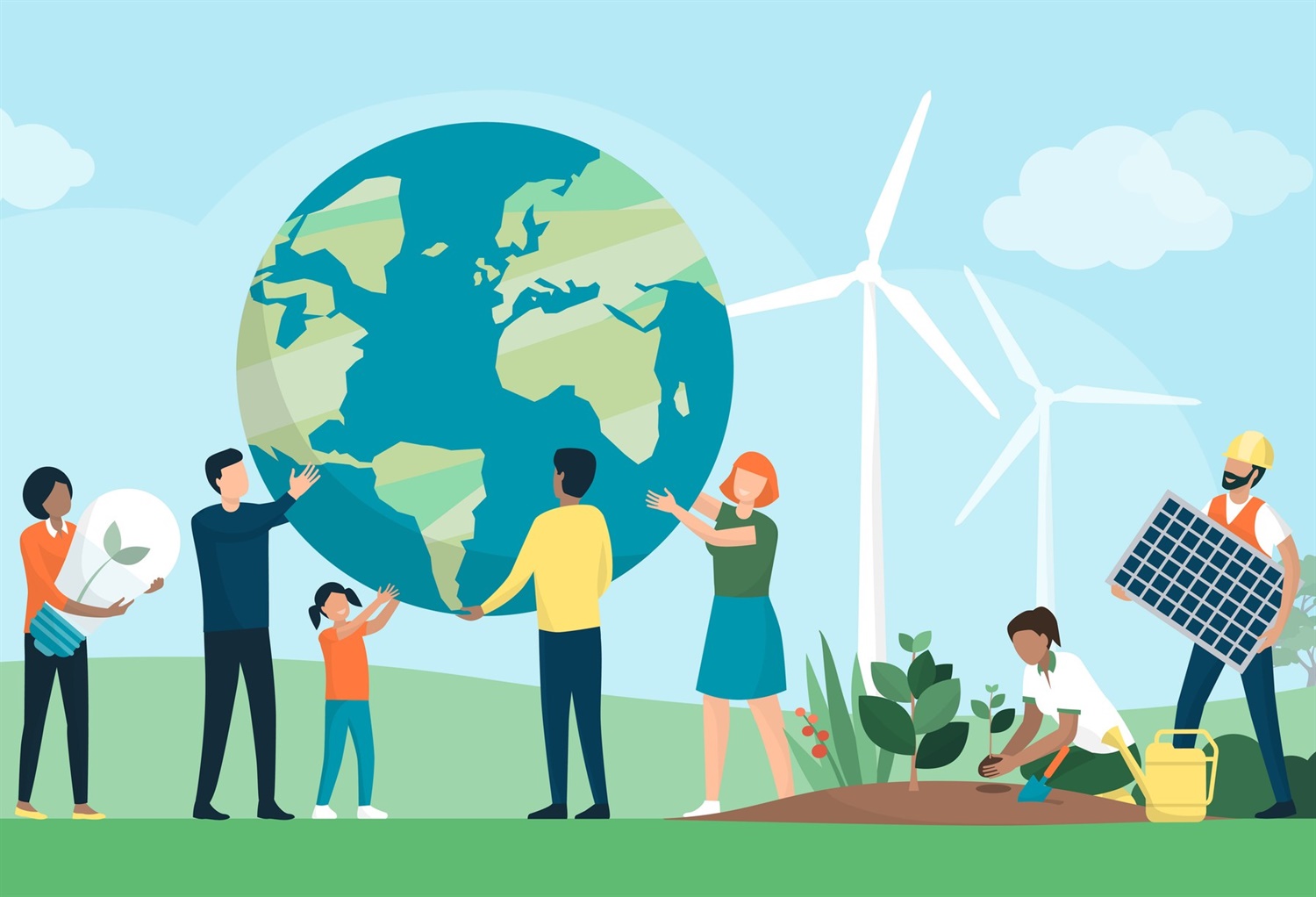Sustainable urban development has become a critical focus as cities worldwide face growing challenges from climate change, rapid population growth, and resource depletion. As urban areas continue to expand, the need for innovative solutions that balance environmental sustainability with economic growth has never been more urgent. Green solutions, such as eco-friendly infrastructure, renewable energy and efficient public transportation systems, are paving the way for cities that not only meet the needs of today but also ensure a healthier, more resilient future for generations to come.
The importance of sustainable cities amid climate change and population growth
In an era where climate change is a pressing global challenge and population growth shows no signs of slowing, the importance of sustainable cities has become increasingly evident. Urban areas account for a significant portion of greenhouse gas emissions and resource consumption, underscoring the need for sustainable urban development. By integrating eco-friendly practices such as renewable energy, green infrastructure, and efficient public transportation systems, sustainable cities can effectively reduce their carbon footprints while meeting the demands of a growing population.
Moreover, sustainable urban development not only addresses environmental concerns but also enhances the quality of life for residents. Access to green spaces, clean air, and reliable public services fosters healthier lifestyles and a sense of community. As cities evolve to accommodate more people, embracing sustainable practices is essential for creating resilient urban environments that promote social equity and economic viability. Ultimately, investing in sustainable cities is a critical step toward ensuring a livable future for all in the face of climate change and population pressures.

Core principles for building greener cities
Building greener cities relies on several core principles that prioritize sustainability and enhance urban living:
Optimal utilization of natural resources
Maximizing resource efficiency is crucial. Implementing strategies like rainwater harvesting and energy-efficient buildings helps reduce resource consumption and waste.
Minimizing greenhouse gas emissions
Cities must focus on reducing emissions by promoting public transportation, cycling, and integrating renewable energy sources into their energy mix.
Environmentally friendly design
Adopting eco-friendly design principles in urban planning—such as using sustainable materials and incorporating green spaces—enhances environmental performance and biodiversity.
Eco-friendly public transit systems
Investing in accessible and efficient public transportation options reduces reliance on cars, lowers traffic congestion, and minimizes pollution.
Preservation of green spaces
Maintaining and creating parks and green areas is vital for improving air quality, enhancing biodiversity, and providing recreational opportunities for residents.
By adhering to these principles, cities can promote sustainable urban development that improves quality of life while protecting the environment.

The advantages of sustainable urban growth
Building greener cities hinges on several core principles that collectively promote sustainability and enhance the quality of urban life. One fundamental principle is the efficient use of natural resources. This involves adopting practices such as rainwater harvesting, energy-efficient building designs, and comprehensive waste recycling programs. By maximizing resource efficiency, cities can significantly reduce their environmental footprint and ensure that resources are available for future generations.
Additionally, cities must prioritize reducing greenhouse gas emissions by promoting public transportation, cycling, and walking, as well as integrating renewable energy sources like solar and wind into their energy infrastructure.
Another crucial aspect is the implementation of environmentally friendly design in urban planning. This means creating spaces that not only meet the needs of residents but also enhance ecological health. Incorporating green roofs, using sustainable materials, and designing buildings that optimize natural light and ventilation can significantly improve urban environments.
Furthermore, preserving green spaces within cities is essential for enhancing air quality, promoting biodiversity, and providing recreational areas for residents. Parks and green corridors foster community engagement and improve overall well-being, making them vital components of sustainable urban development. By embracing these core principles, cities can create vibrant, resilient, and environmentally friendly spaces that cater to the needs of current and future inhabitants.
Challenges in achieving urban sustainability
Achieving urban sustainability is fraught with challenges that cities must navigate. One significant obstacle is the high costs associated with sustainable construction and implementation. Developing green infrastructure often requires substantial upfront investments in eco-friendly technologies and materials, which can be a barrier for many cities, especially in developing regions.
Another challenge is the lack of financial and human resources needed to support sustainability initiatives. Many urban areas operate with limited budgets and personnel, making it difficult to prioritize and execute effective sustainable practices. Additionally, the shortage of skilled workers trained in sustainability further hampers progress.
Moreover, cities frequently face conflicts between economic growth and environmental protection. Policymakers may prioritize short-term economic gains over long-term sustainability, leading to decisions that compromise environmental integrity. This is often complicated by a lack of collaboration between government agencies and the private sector, resulting in fragmented efforts that diminish the effectiveness of sustainability strategies.
In summary, while the pursuit of urban sustainability is essential for addressing climate change and population growth, cities must overcome high costs, resource limitations, economic conflicts, and the need for better cooperation to create resilient urban environments.

Innovative global solutions for urban development
As cities face the challenges of rapid urbanization and climate change, innovative solutions for urban development are emerging to promote sustainability. One notable approach is the concept of smart cities, which utilizes advanced technologies like Internet of Things (IoT) devices and big data analytics to enhance urban living. Smart city initiatives improve traffic management, optimize energy use, and streamline public services, leading to more responsive and sustainable environments.
Another effective solution is the adoption of green infrastructure, which integrates natural processes into urban design. This includes green roofs, permeable pavements, and urban forests, all of which help manage stormwater, improve air quality, and enhance biodiversity. Cities such as Singapore and Amsterdam have successfully implemented these strategies, creating vibrant urban spaces that offer environmental and social benefits.
Furthermore, the rise of mixed-use developments fosters sustainable urban growth by combining residential, commercial, and recreational spaces. This approach reduces the need for long commutes and encourages walking and cycling. By adopting these innovative solutions-smart technologies, green infrastructure, and mixed-use planning-cities can create more livable environments that effectively address the pressing challenges of our time.
Trends in sustainable urban development in Vietnam
Vietnam is increasingly embracing sustainable urban development to tackle rapid urbanization and environmental challenges.
Green building initiatives
The adoption of green building practices is on the rise, with standards like LOTUS promoting eco-friendly designs that enhance energy efficiency and reduce waste.
Investment in public transportation
Cities are investing in public transportation systems, such as the Hanoi Metro and Ho Chi Minh City Urban Railway, to reduce traffic congestion and carbon emissions.
Urban green spaces
There is a growing focus on creating and preserving green spaces in cities, enhancing residents’ quality of life and improving urban biodiversity.
Climate resilience planning
Vietnamese cities are developing climate resilience strategies, including flood-resistant infrastructure and improved drainage systems, to combat climate change impacts.
These trends highlight Vietnam’s commitment to building sustainable and livable urban environments
In conclusion, sustainable urban development is essential for creating resilient cities that can thrive amid the challenges of climate change and rapid urbanization. By embracing green solutions, such as innovative technologies, efficient public transportation, and the integration of green spaces, urban areas can enhance the quality of life for their residents while minimizing environmental impact.
As cities around the world continue to evolve, the commitment to sustainable practices will play a pivotal role in shaping a greener, more sustainable future for generations to come. By prioritizing these initiatives, we can ensure that urban development not only meets the needs of today but also protects the planet for tomorrow.
